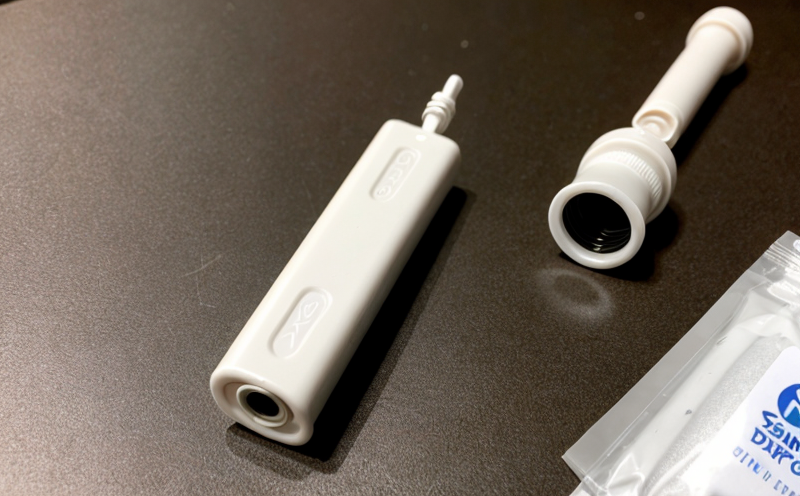Real-Time Shelf-Life Stability Testing for Disposable Devices
Shelf-life stability testing is crucial in ensuring that disposable medical devices maintain their efficacy and safety over time. This process involves monitoring the performance of these devices under real-time conditions to predict their shelf life accurately. For single-use devices, it ensures they remain sterile, functional, and safe for use until their expiration date.
Real-time testing is particularly important because it allows manufacturers to understand how environmental factors such as temperature, humidity, and light exposure affect the integrity of disposable medical devices. This understanding helps in setting appropriate storage conditions and shelf-life claims that meet regulatory requirements and customer expectations.
The process typically involves exposing samples of the device to various stressors over a period that simulates their expected shelf life. This can range from a few weeks for less critical devices to several months or even years for those with higher risk profiles. The goal is to identify any degradation in performance, functionality, or safety at an early stage so corrective actions can be taken.
For single-use devices, the focus is on ensuring sterility and integrity throughout their shelf life. This includes monitoring physical properties like strength, flexibility, and durability, as well as chemical stability and biocompatibility. Compliance with international standards such as ISO 10993-17 ensures that the testing protocol aligns with industry best practices.
Manufacturers often use sophisticated equipment to conduct these tests, including environmental chambers capable of simulating different storage conditions. These chambers can control temperature, humidity, and other variables to replicate real-world scenarios where the devices will be stored before reaching their end-users. The data collected during this process is crucial for generating reliable shelf-life claims that can help protect both the manufacturer’s reputation and patient safety.
Another critical aspect of real-time testing is ensuring compliance with regulatory requirements, such as those set forth by the International Medical Device Regulator Forum (IMDRF) and the U.S. Food and Drug Administration (FDA). These guidelines provide frameworks for conducting shelf-life studies that ensure consistency across different regions and organizations.
The benefits of real-time shelf-life stability testing are manifold, making it an essential part of any medical device development process. The following list highlights some key advantages:
- Enhanced product quality and reliability
- Promotion of patient safety by ensuring consistent performance over time
- Increased regulatory compliance with industry standards
- Cost savings through reduced waste due to premature failures or recalls
Applied Standards
The shelf-life stability testing of disposable devices is governed by several international standards, including ISO 10993-17 and ASTM F2456. These documents provide guidelines for conducting shelf-life studies to ensure that the devices remain safe and effective throughout their expected storage periods.
ISO 10993-17 specifically addresses biocompatibility testing, which is crucial for ensuring that single-use medical devices do not cause adverse reactions when used as intended. This standard helps manufacturers demonstrate compliance with regulatory requirements by providing a structured approach to assessing the biological performance of their products.
ASTM F2456 offers additional insights into the testing procedures and acceptance criteria for shelf-life studies. It provides detailed instructions on how to design, conduct, and analyze these tests, ensuring that they are both scientifically robust and clinically relevant. Compliance with these standards not only enhances the credibility of your product but also facilitates smoother interactions with regulatory bodies.
By adhering to these internationally recognized standards, manufacturers can ensure that their testing protocols are consistent, reproducible, and aligned with global best practices. This consistency is vital for building trust among healthcare providers and consumers who rely on the safety and effectiveness of medical devices.
Benefits
- Enhanced Product Quality: Real-time shelf-life stability testing helps identify potential issues early, allowing for improvements in manufacturing processes. This results in higher-quality products that perform consistently over time.
- Patient Safety: Ensuring devices remain safe and effective throughout their shelf life is critical to maintaining patient safety. By conducting rigorous tests, manufacturers can minimize the risk of adverse events associated with device failure or contamination.
- Regulatory Compliance: Adherence to international standards ensures that testing protocols meet regulatory requirements, facilitating smoother interactions with various authorities and reducing the likelihood of delays in market approval.
- Cost Savings: Early detection of potential issues through real-time testing can prevent costly recalls and warranty claims. It also helps reduce waste by identifying devices that may have degraded prematurely.





